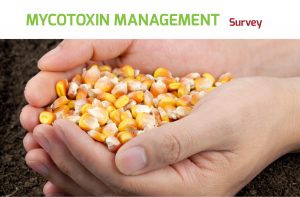


ADISSEO Poland 2019: Survey of mycotoxins in wheat
The term “mycotoxins” defines secondary fungal metabolites that cause biochemical, physiologic and/or pathologic changes in other species, which include vertebrates, other animal groups, plants, and microbes. Mycotoxins have low molecular weight molecules (Mw <700) and are toxic in low concentrations (Haschek & Voss, 2013). Even though hundreds of compounds have been isolated and chemically characterized as mycotoxins, only approximately 50 have been studied in detail (CAST, 2003).
The 2019 Adisseo mycotoxin survey included 117 wheat samples from across Poland. The survey provided insight into the incidence of aflatoxin B1 (AfB1), zearalenone (ZEN), deoxynivalenol (DON), T-2 toxin, HT-2 toxin, fumonisin B1 (FB1), fumonisin B2 (FB2) and ochratoxin A (OTA). The wheat samples were collected directly from farms or animal feed production sites.
Sample providers were advised to follow the principles of good sampling (Richard, 2000). Analytical personnel and laboratory staff were not involved and therefore did not influence the sampling process at any stage. All 117 samples were collected almost immediately after harvesting, so the probability of storage mycotoxins (e.g. OTA) developing was low.
All 8 mycotoxins were analyzed by liquid chromatography tandem mass spectrometry (LC MS/MS). For the purpose of data analysis, non-detection levels were based on the limits of quantification (LOQ) of the test method for each mycotoxin: AfB1 <0,5 μg/kg; ZEN <10 μg/kg; DON <75 μg/kg; FB1 <125 μg/kg; FB2 <50 μg/kg; OTA <1 μg/kg; T-2 toxin < 4 μg/kg and HT-2 toxin<4 μg/kg.
By Radka Borutova, Adisseo